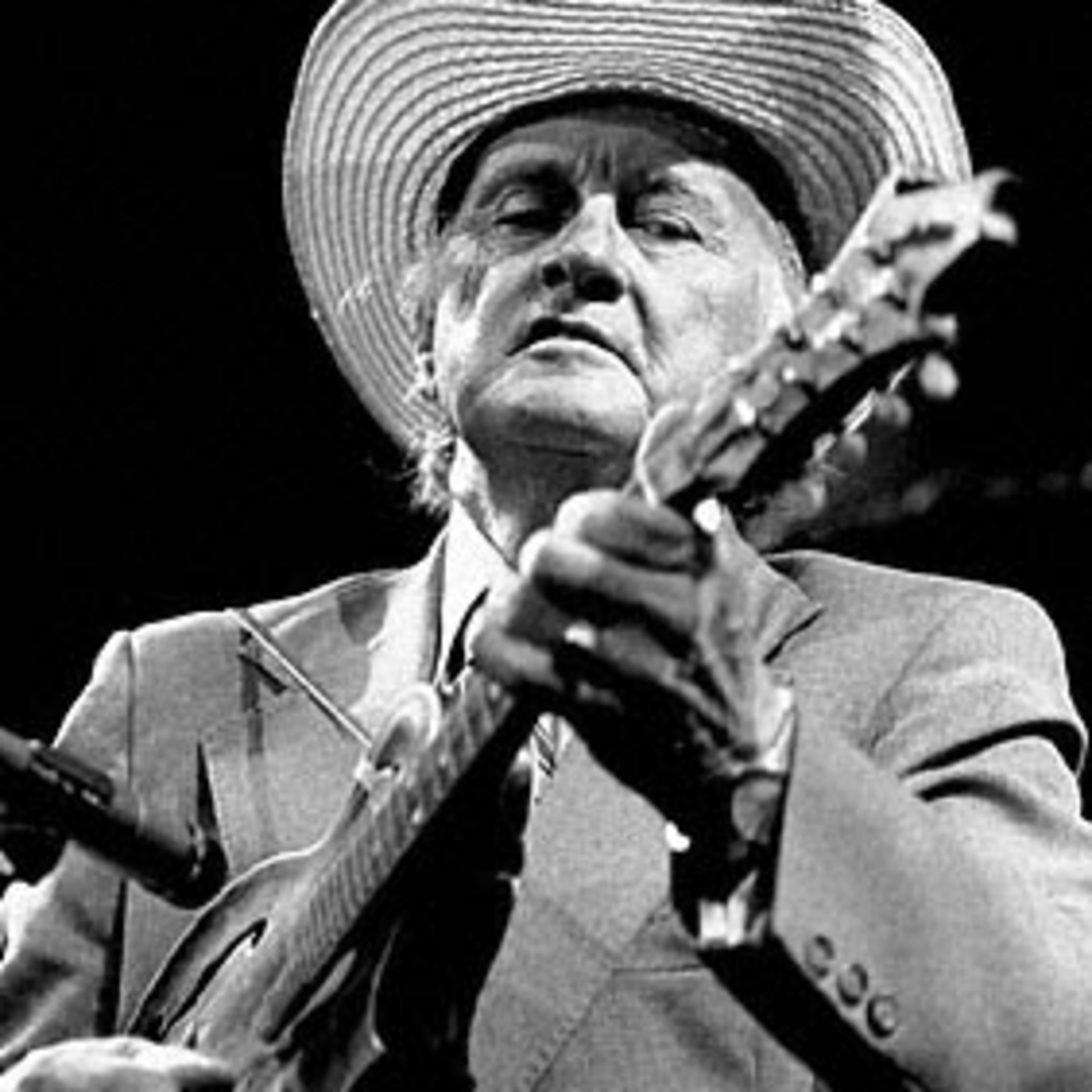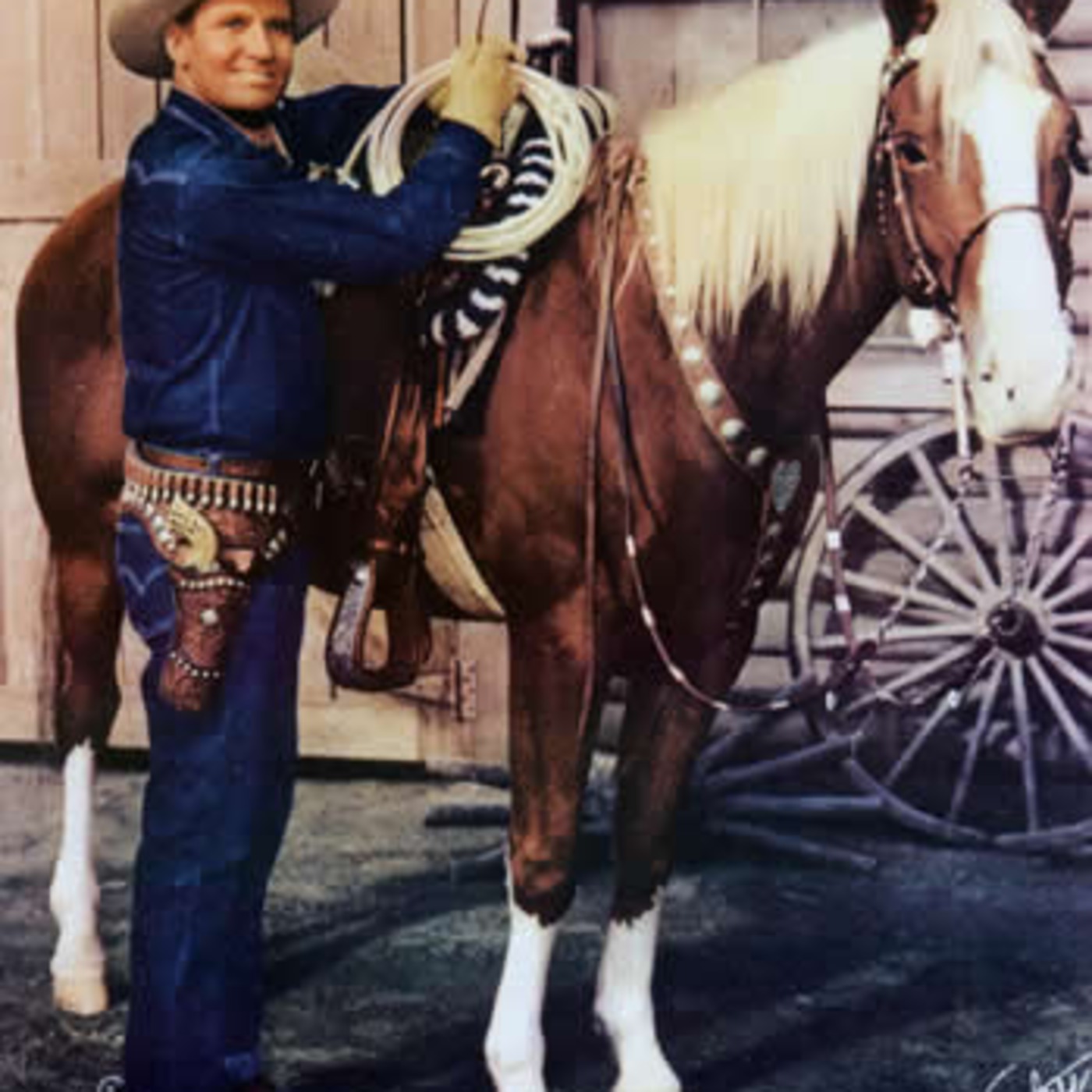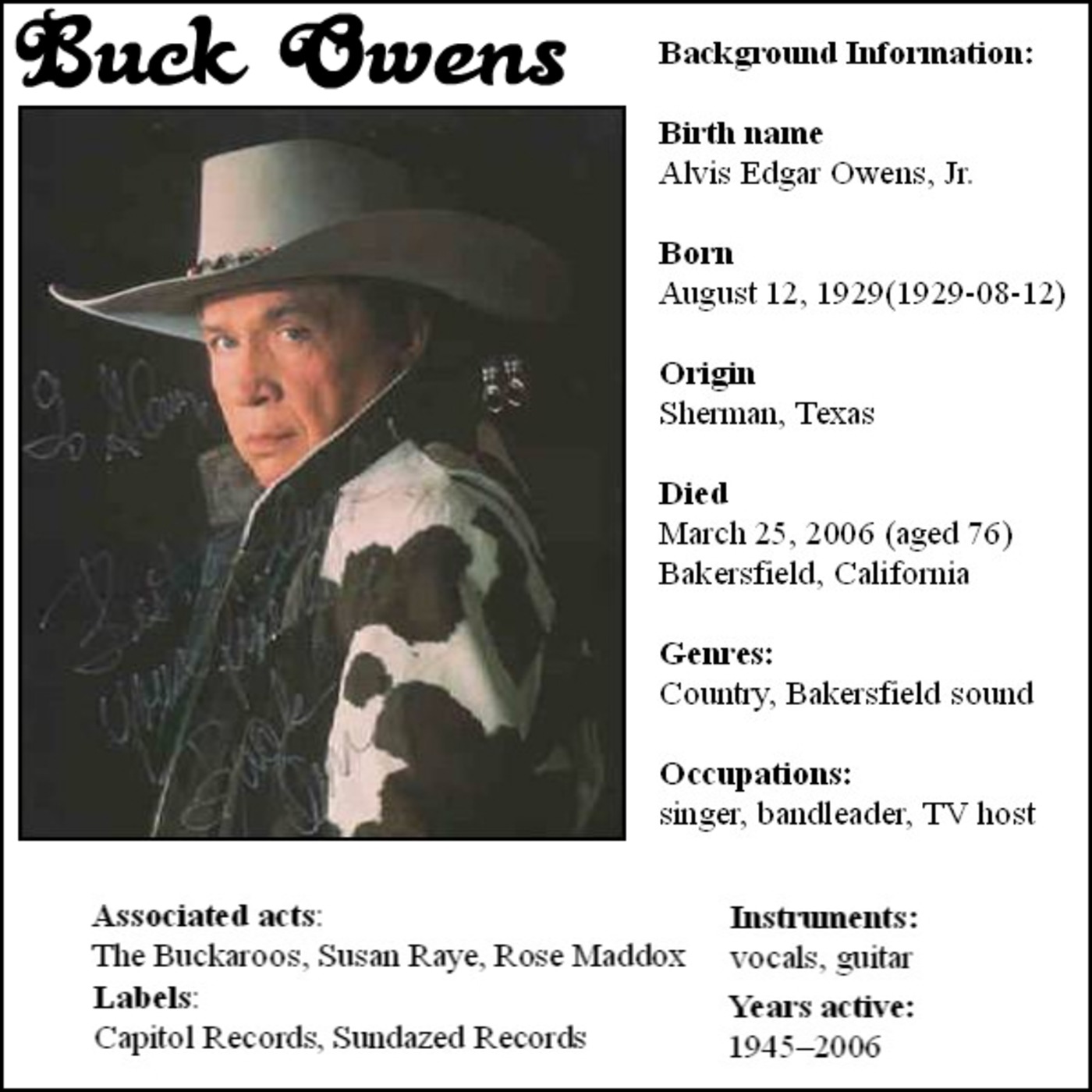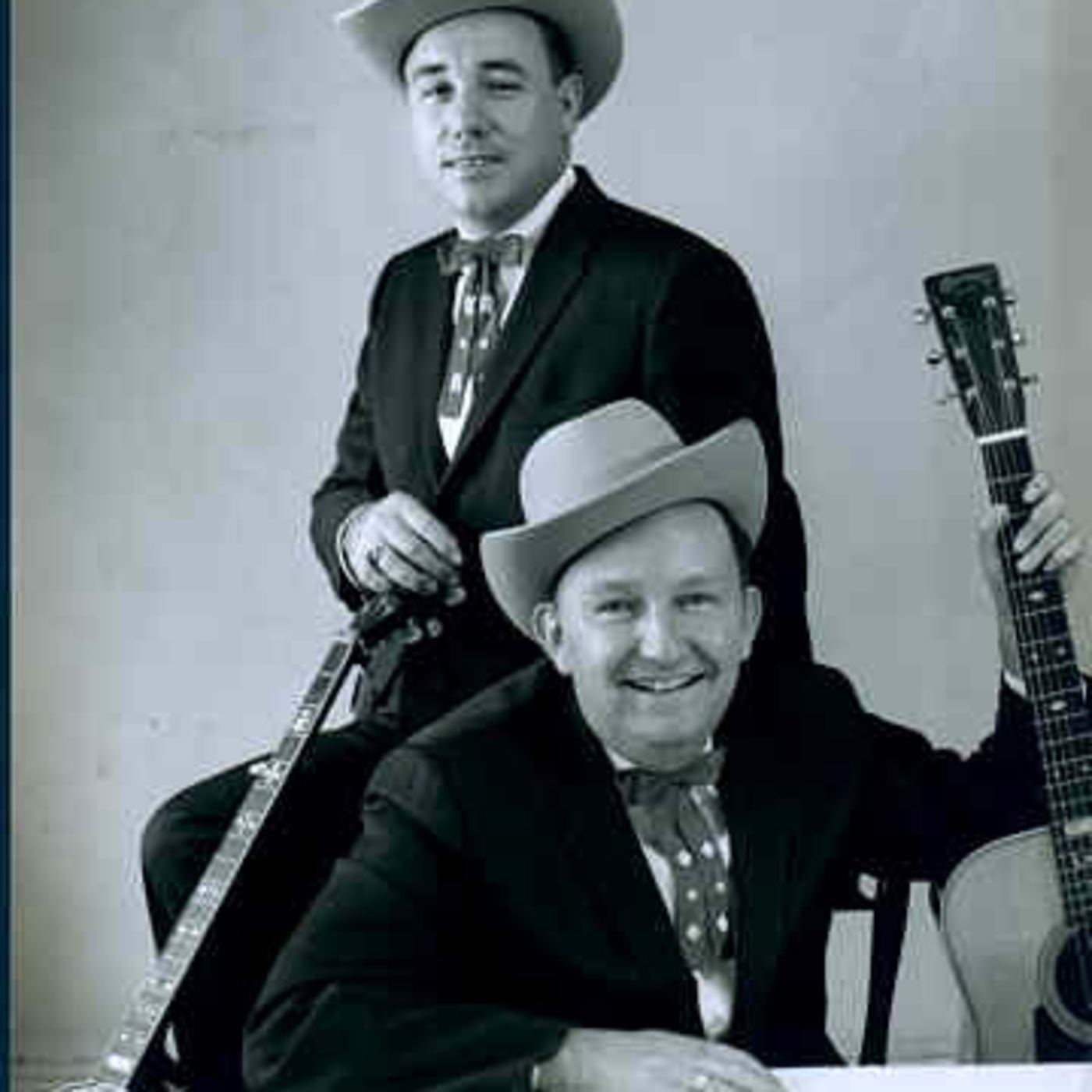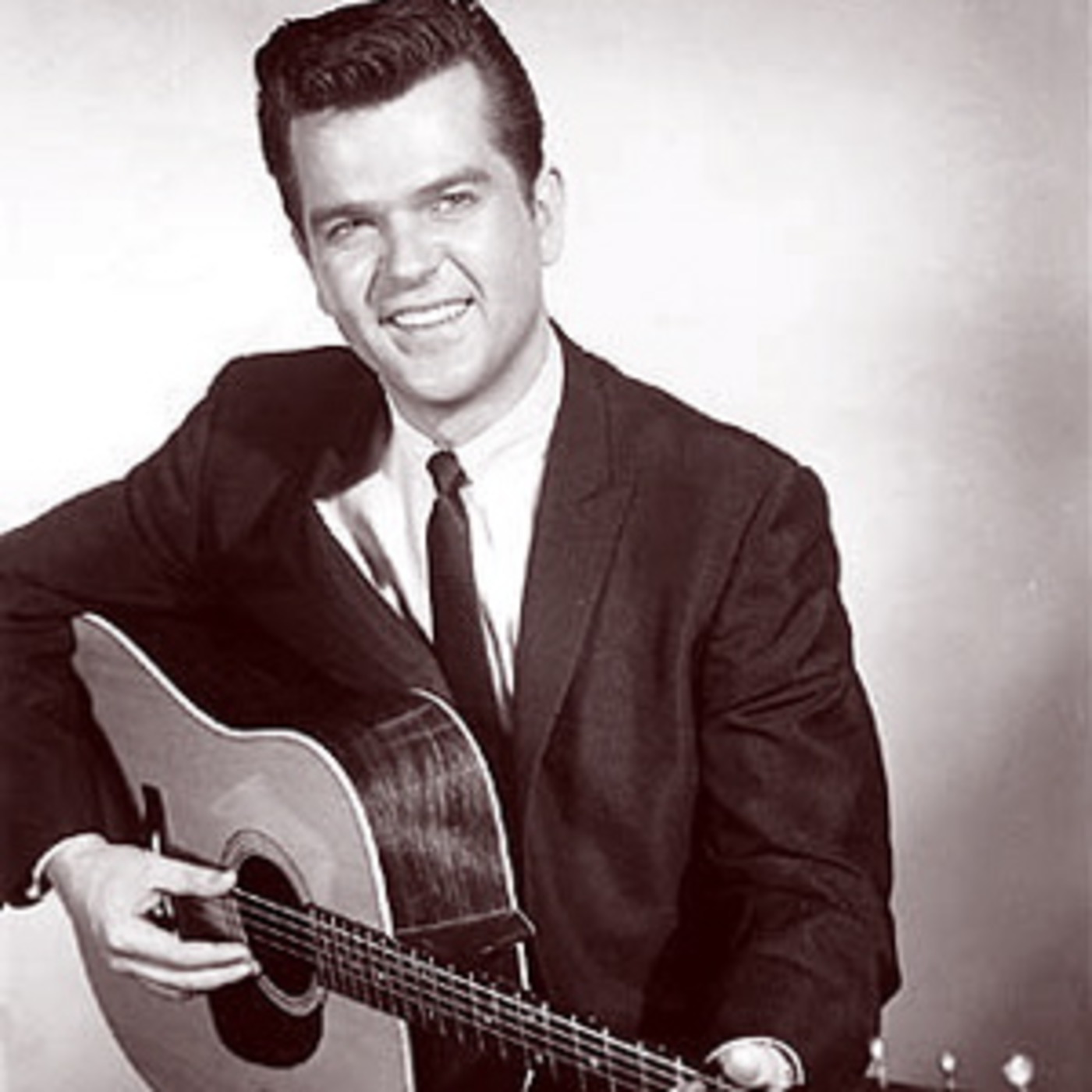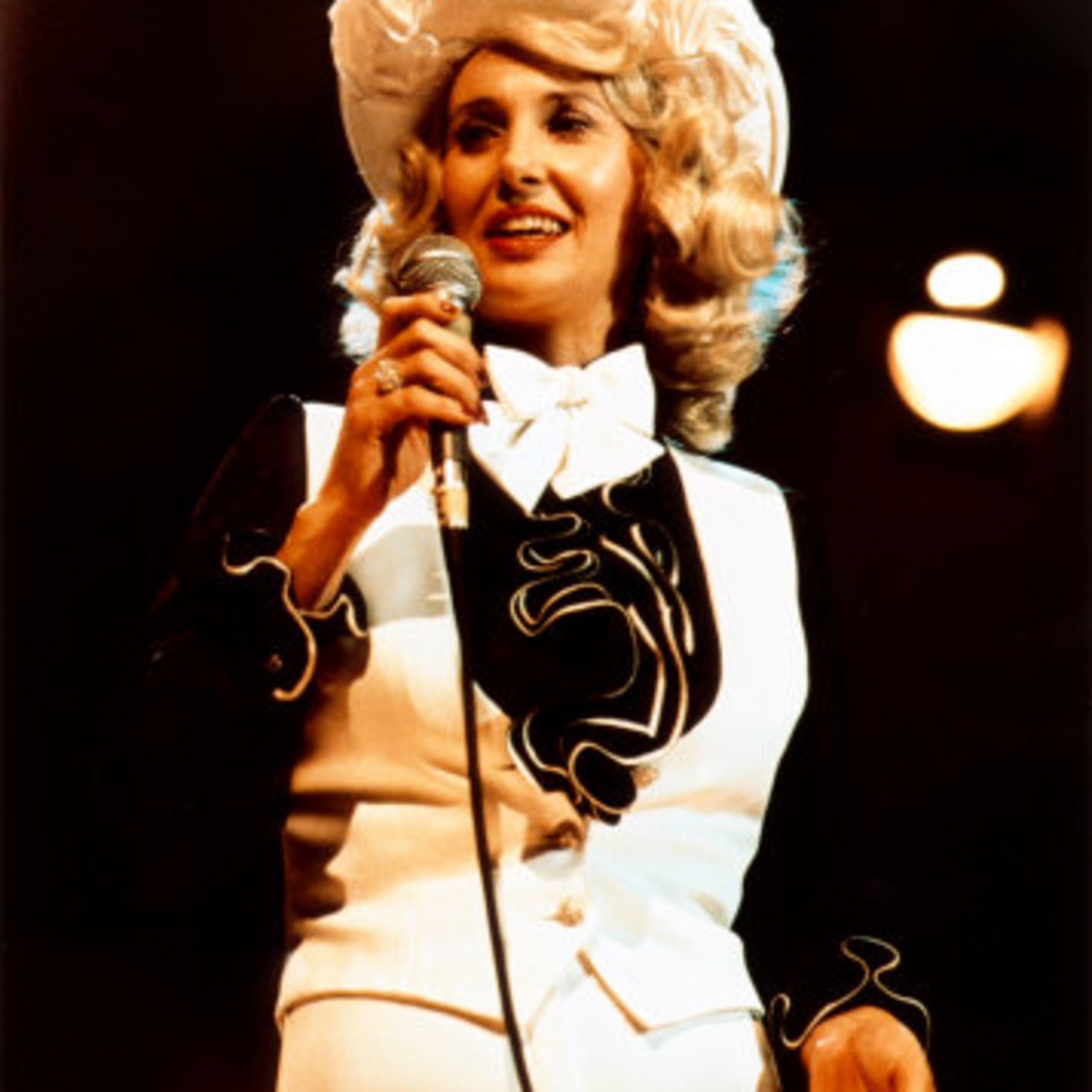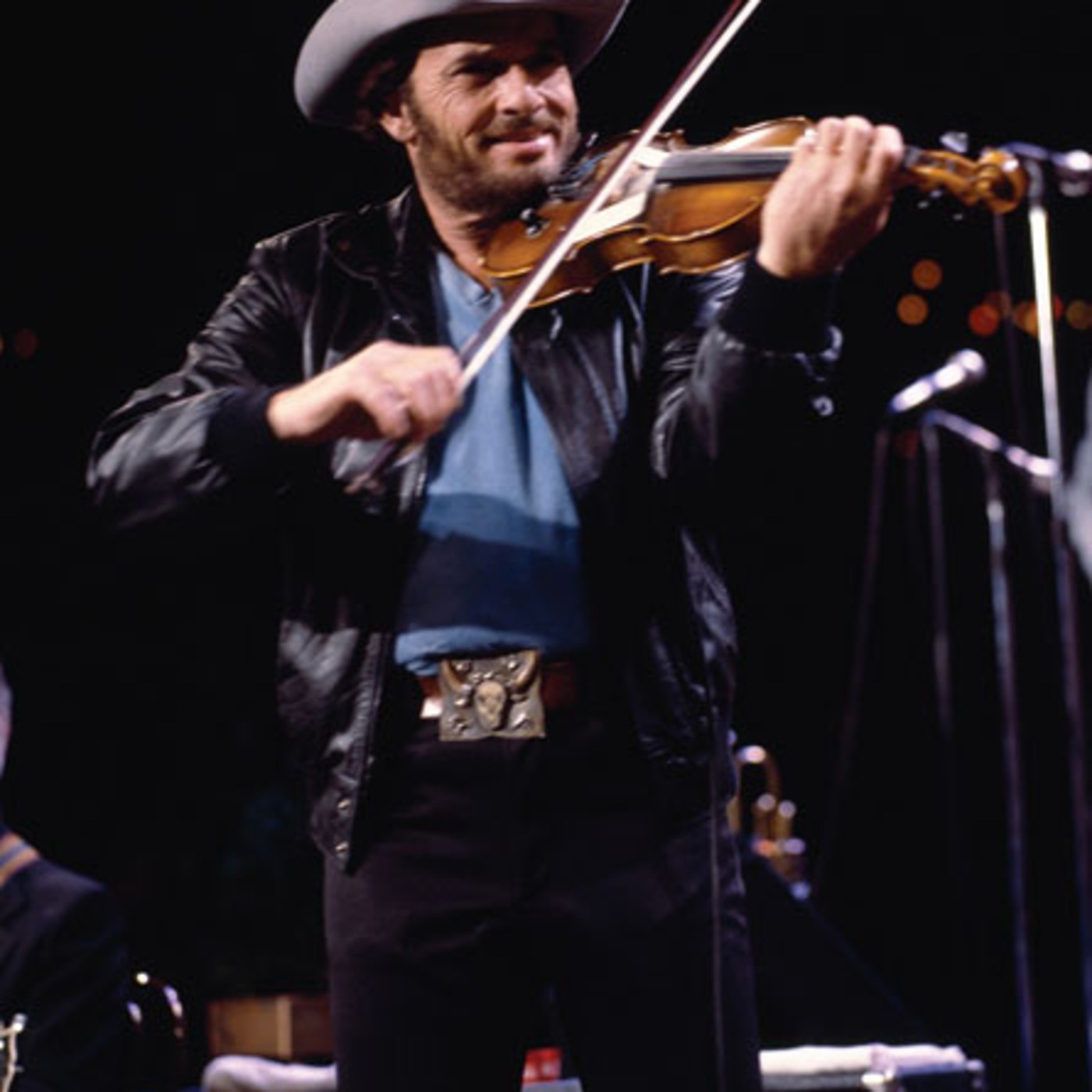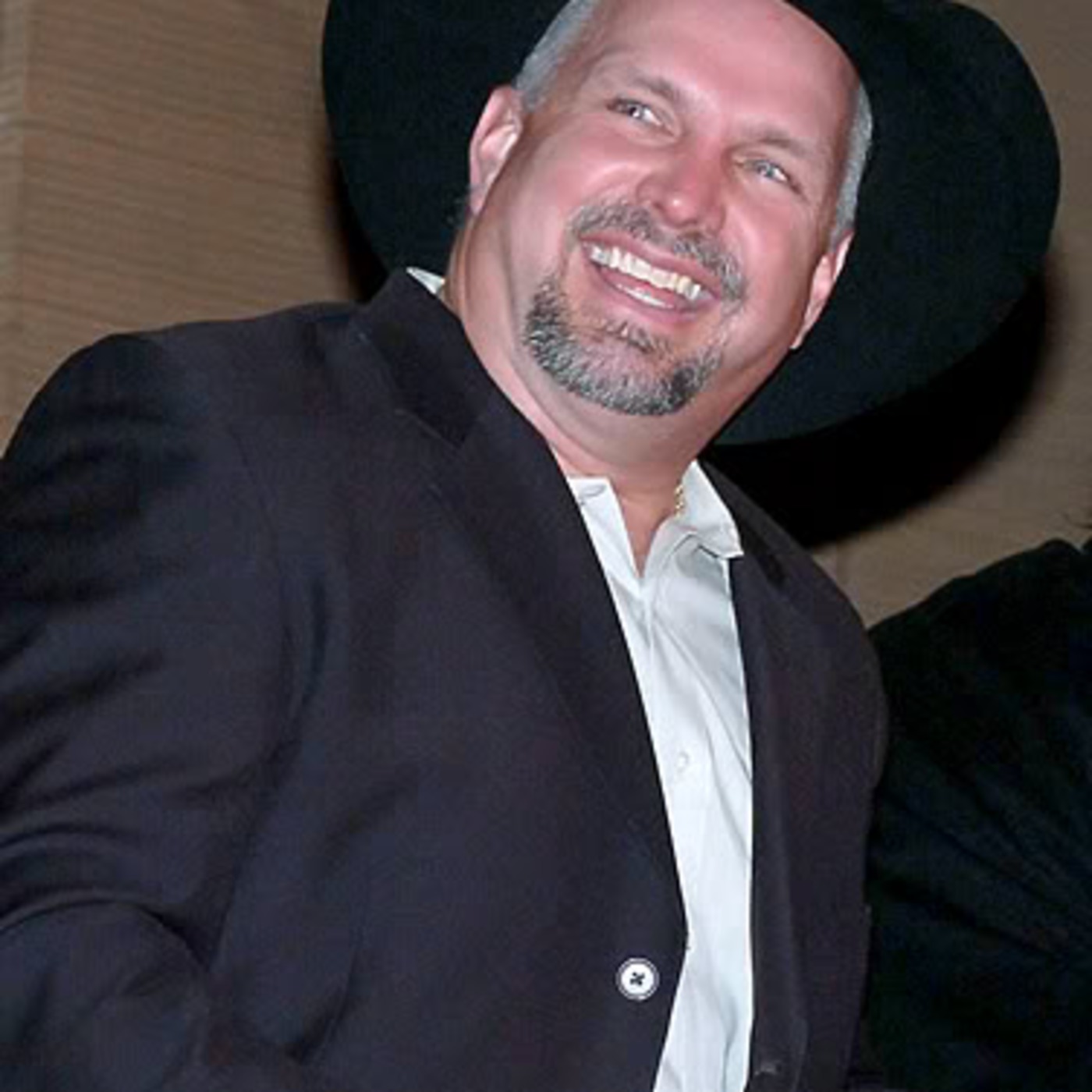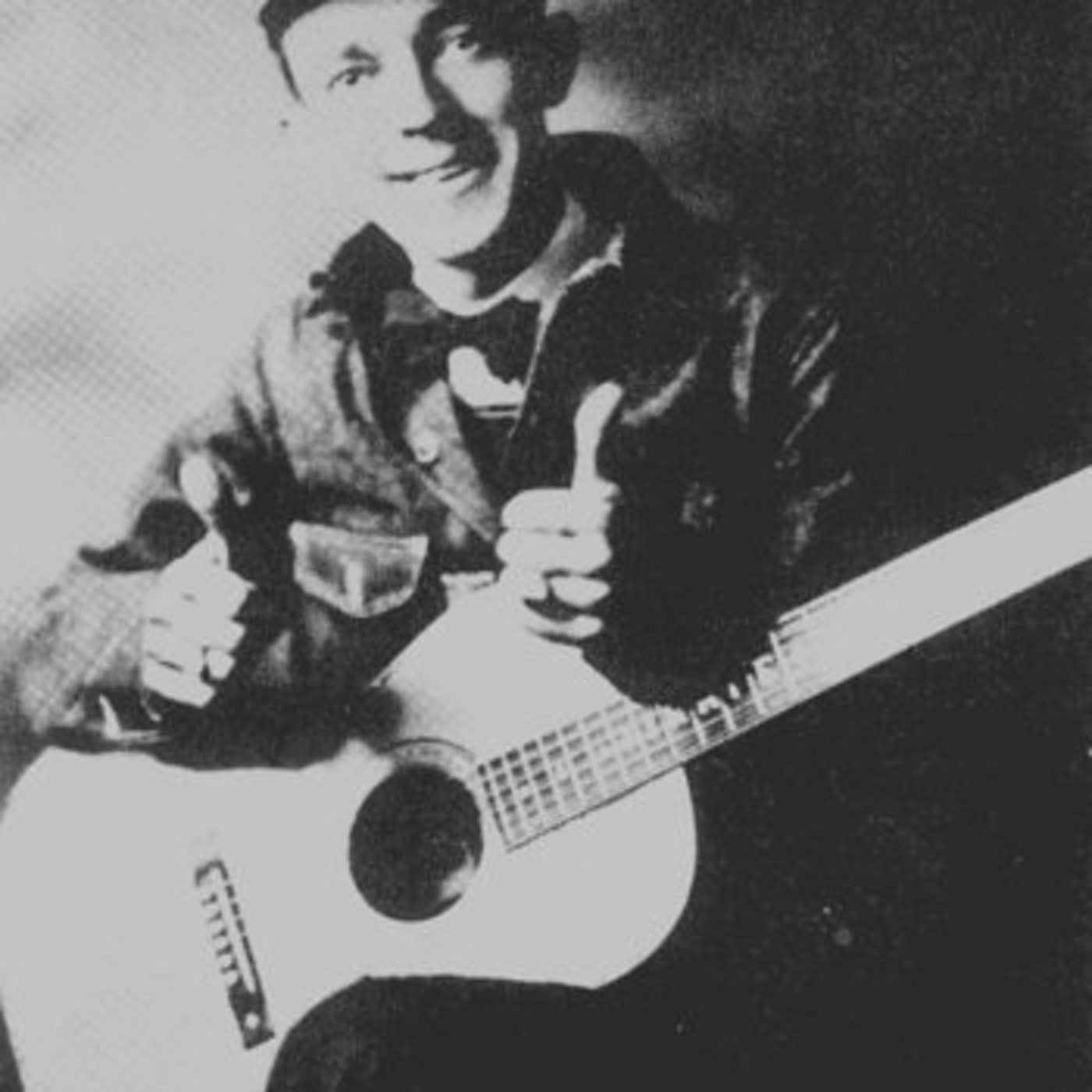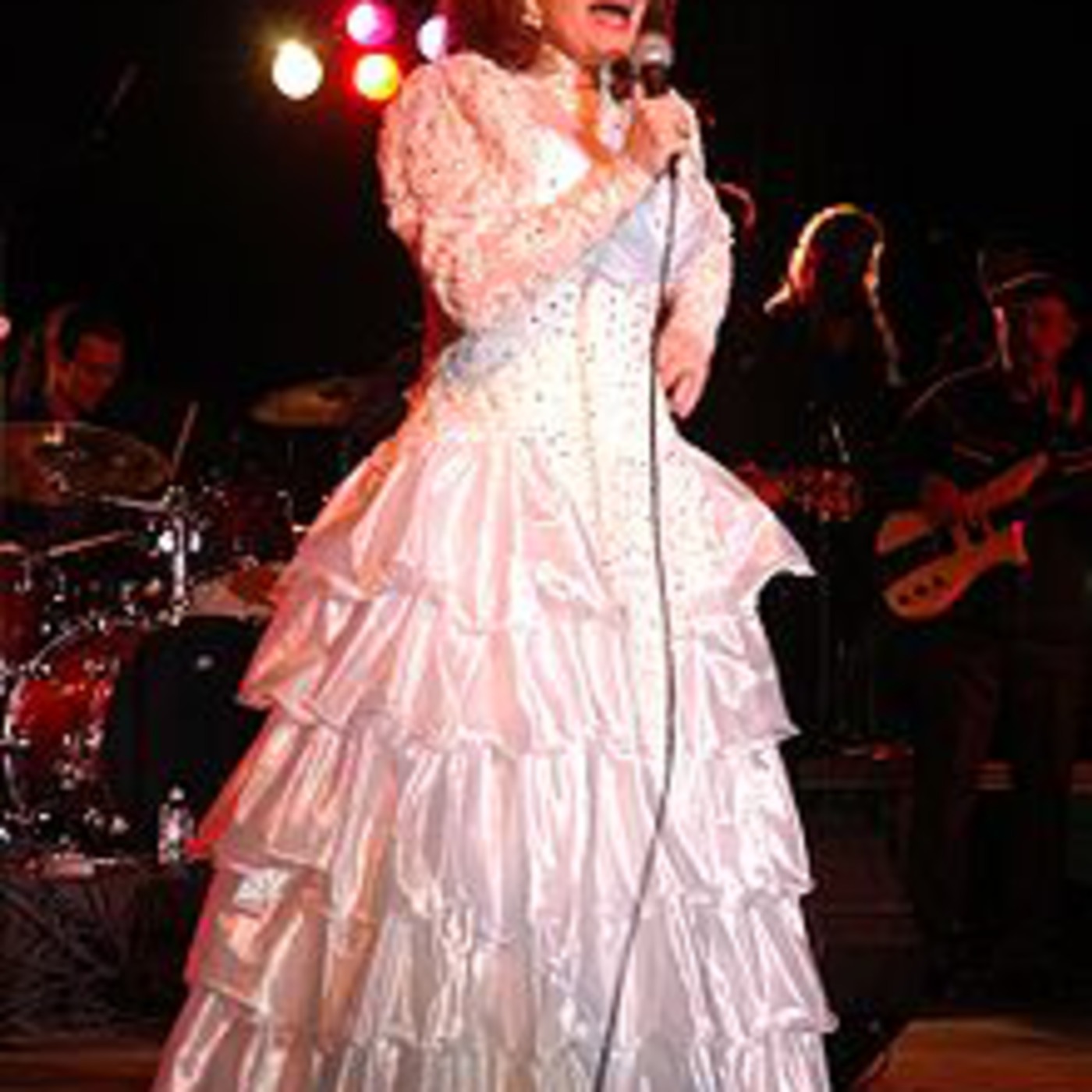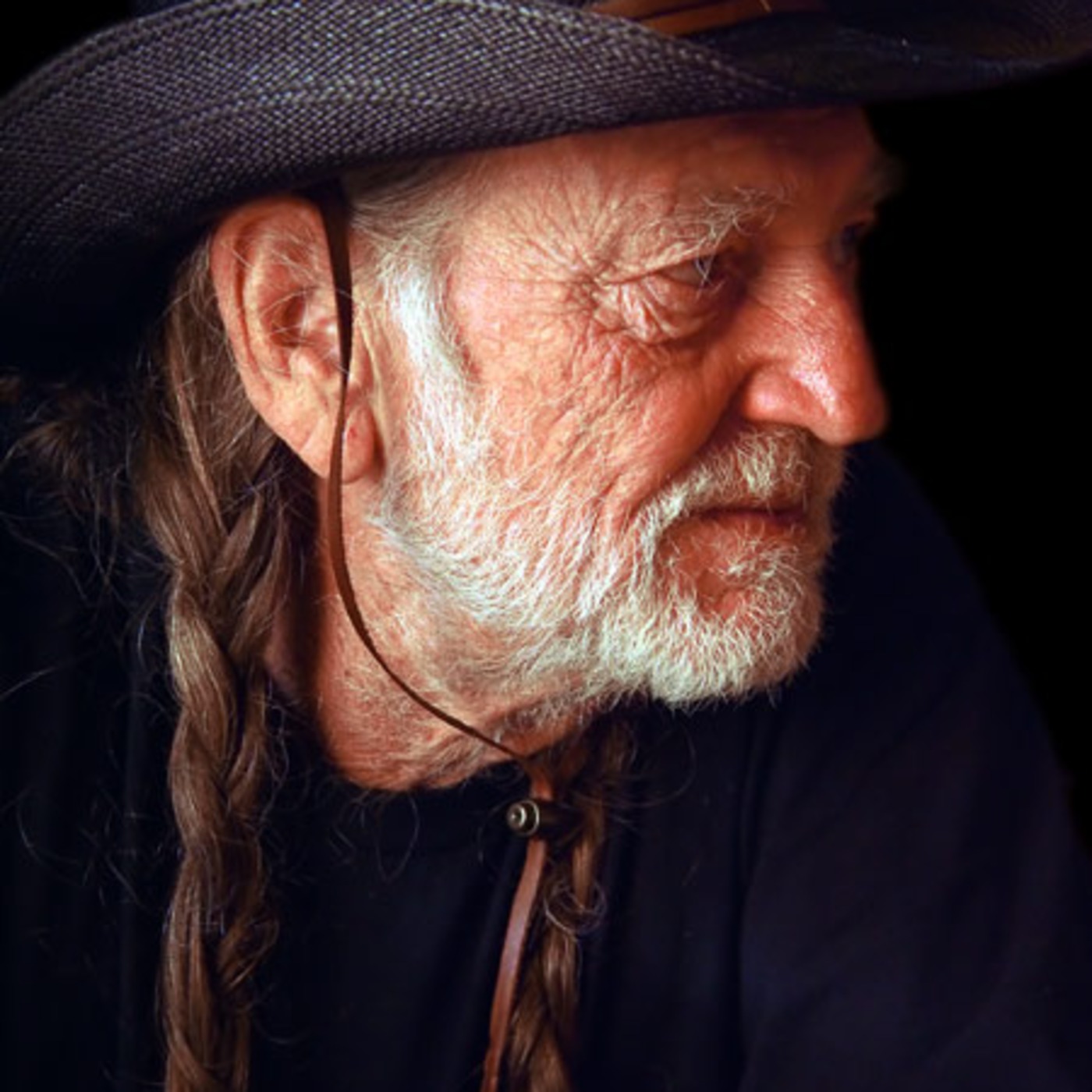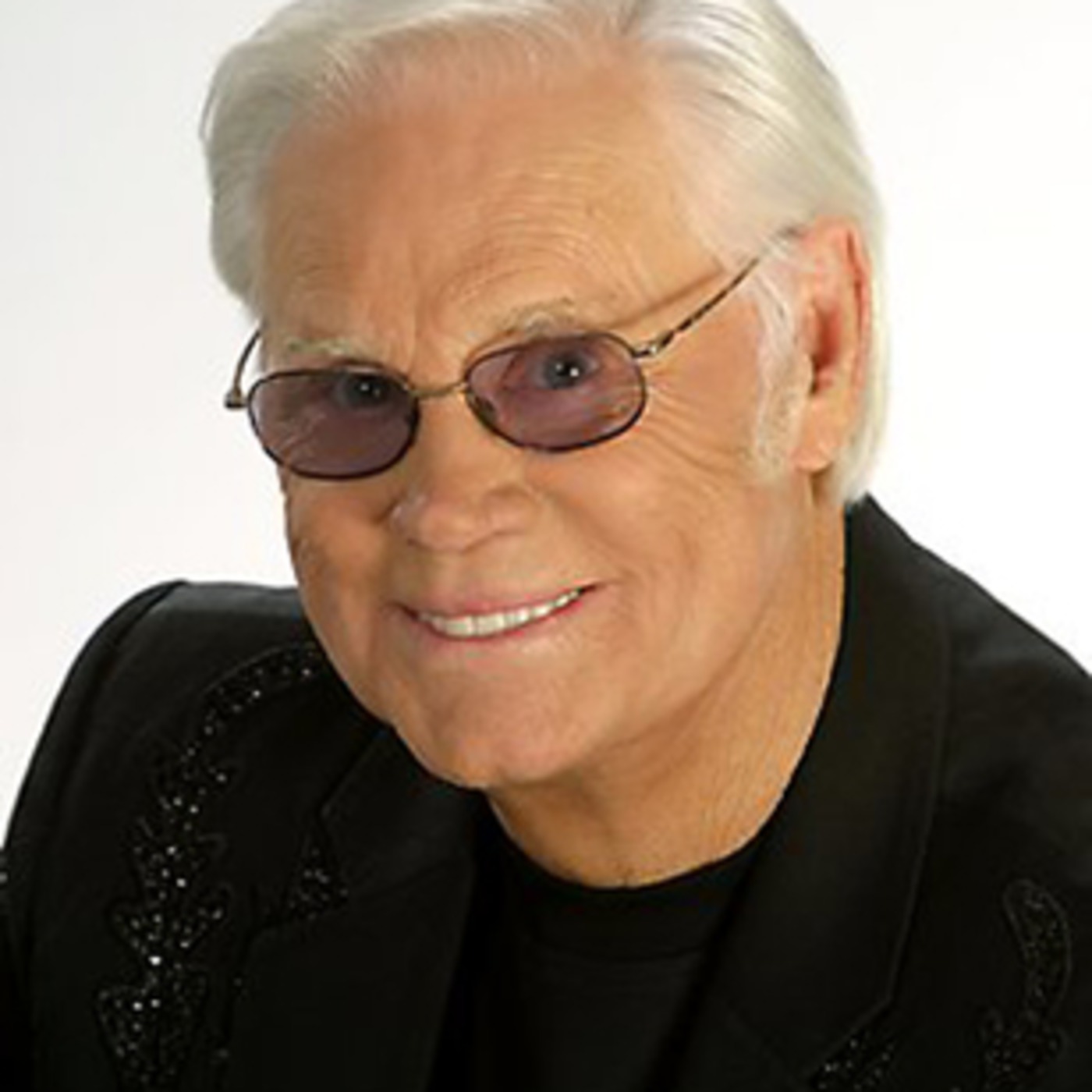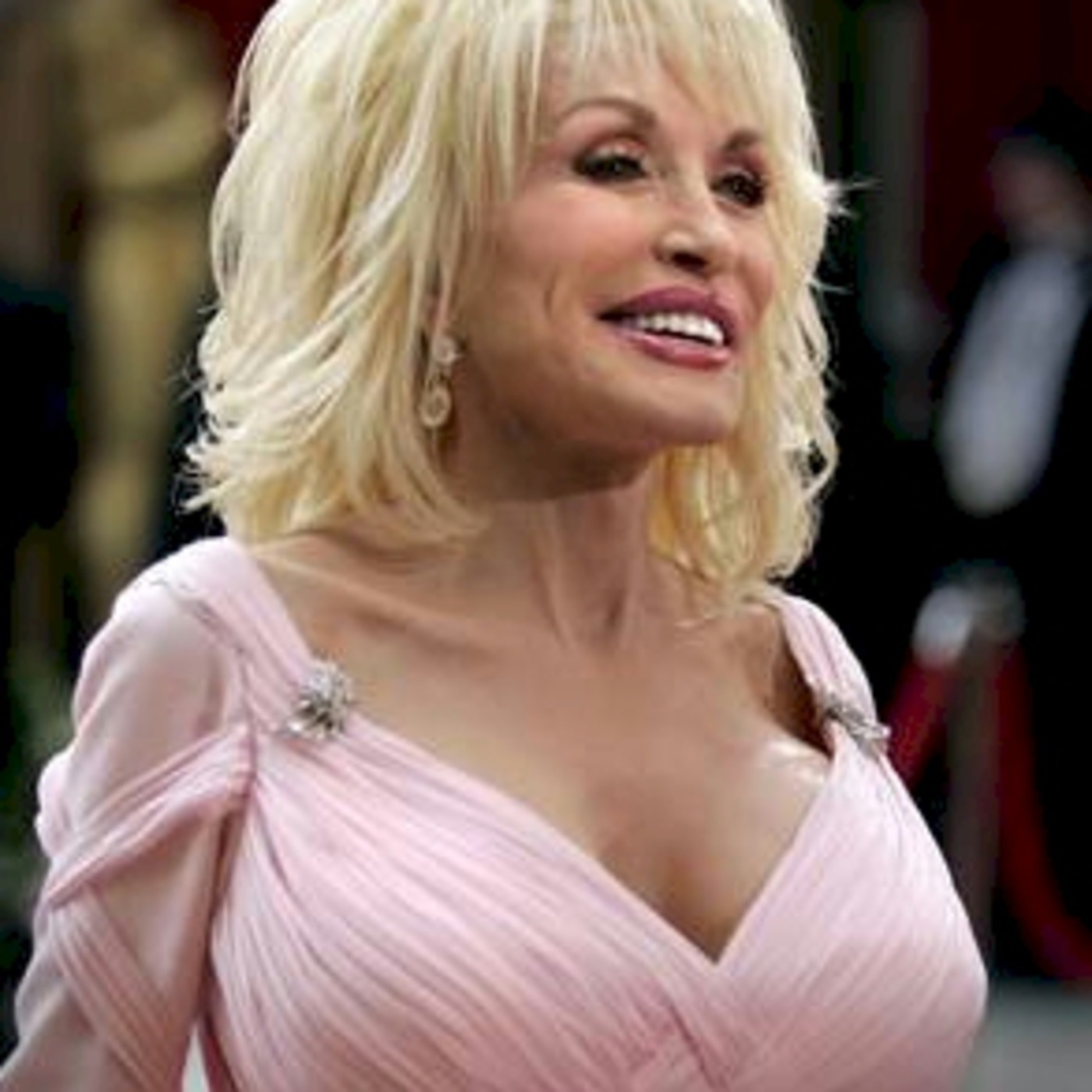Bill Monroe - Blue Moon Of Kentucky
Update: 2010-06-08
Description
From Wikipedia, the free encyclopedia
William Smith Monroe (September 13, 1911–September 9, 1996) was an American musician who helped develop the style of music known as bluegrass, which takes its name from his band, the "Blue Grass Boys," named for Monroe's home state of Kentucky. Monroe's performing career spanned 60 years as a singer, instrumentalist, composer and bandleader. He is often referred to as The Father of Bluegrass.
Early life
Monroe was born on his family's farm near Rosine, Kentucky, the youngest of eight children of James Buchanan "Buck" Monroe and Malissa Vandiver Monroe. Malissa and her brother, Pendleton "Pen" Vandiver, were both musically inclined, and Monroe and his siblings grew up playing and singing music in the home. Because his older brothers Birch and Charlie had already laid claim to the fiddle and guitar, respectively, young Bill was left with the smaller and less desirable mandolin during family picking sessions. Monroe later recalled that his brothers insisted that he remove four of the eight strings from the instrument so that he would not play too loudly.
Monroe's mother died when he was ten years old, followed by his father six years later. Because his siblings had moved away from Rosine, Monroe lived for about two years with his uncle Pen Vandiver, often accompanying him when Vandiver played the fiddle at local dances. This experience later inspired one of Monroe's most famous compositions, "Uncle Pen," recorded in 1950; on a 1972 album, Bill Monroe's Uncle Pen, Monroe recorded a number of traditional fiddle tunes often performed by Vandiver. Uncle Pen Vandiver has been credited with giving Monroe "a repertoire of tunes that sank into Bill's aurally trained memory and a sense of rhythm that seeped into his bones." Another influence in Monroe's musical life was a black musician named Arnold Shultz who introduced Monroe to the blues.
The "Original Bluegrass Band" and Monroe's heyday as a star
A key development occurred in Monroe's music with the addition of North Carolina banjo prodigy Earl Scruggs to the Blue Grass Boys in December 1945. Scruggs played the instrument with a distinctive three-finger picking style that immediately caused a sensation among Opry audiences. Scruggs joined a highly accomplished group that included singer/guitarist Lester Flatt, fiddler Chubby Wise, and bassist Howard Watts, who often performed under the name "Cedric Rainwater." In retrospect, this lineup of the Blue Grass Boys has been dubbed the "Original Bluegrass Band," as Monroe's music finally included all the elements that characterize the genre, including breakneck tempos, sophisticated vocal harmony arrangements, and impressive instrumental proficiency demonstrated in solos or "breaks" on the mandolin, banjo, and fiddle. By this point, Monroe had acquired the 1923 Gibson F5 model "Lloyd Loar" mandolin which became his trademark instrument for the remainder of his career.
The 28 songs recorded by this version of the Blue Grass Boys for Columbia Records in 1946 and 1947 soon became classics of the genre, including "Toy Heart," "Blue Grass Breakdown," "Molly and Tenbrooks," "Wicked Path of Sin," "My Rose of Old Kentucky," "Little Cabin Home on the Hill," and Monroe's most famous song, "Blue Moon of Kentucky." The last-named was recorded by Elvis Presley in 1954, appearing as the B-side of his first single for Sun Records. Monroe gave his blessing to Presley's rock-and-roll cover of the song, originally a slow ballad in waltz time, and in fact re-recorded it himself with a faster arrangement after Presley's version became a hit. Several gospel-themed numbers are credited to the "Blue Grass Quartet," which featured four-part vocal arrangements accompanied solely by mandolin and guitar — Monroe's usual practice when performing "sacred" songs.
Both Flatt and Scruggs left Monroe's band in early 1948, soon forming their own group, the Foggy Mountain Boys, which met with notable commercial success in the 1950s and 1960s with such hits as "Foggy Mountain Breakdown," "Cabin on the Hill," and "The Ballad of Jed Clampett." In 1949, after signing with Decca Records, Monroe quickly regrouped, entering the "golden age" of his career[6] with what many consider the classic "high lonesome" version of the Blue Grass Boys, featuring the lead vocals and rhythm guitar of Jimmy Martin, the banjo of Rudy Lyle (replacing Earl Scruggs), and fiddlers such as Merle "Red" Taylor, Charlie Cline, Bobby Hicks and Vassar Clements. This band recorded a number of bluegrass classics, including "My Little Georgia Rose," "On and On," "Memories of Mother and Dad," and "Uncle Pen," as well as instrumentals such as "Roanoke", "Big Mon", "Stoney Lonesone", "Get Up John" and the mandolin feature "Raw Hide." Carter Stanley joined the Blue Grass Boys as guitarist for a short time in 1951 during a period when the Stanley Brothers had temporarily disbanded.
On January 16, 1953 Monroe was critically injured in a two-car wreck. He and "Bluegrass Boys" bass player, Bessie Lee Mauldin, were returning home from a fox hunt north of Nashville. On highway 31-W, near White House, their car was struck by a drunken driver. Monroe, who had suffered injuries to his back, left arm and nose, was rushed to General Hospital in Nashville. It took him almost four months to recover and resume touring. In the meantime Charlie Cline and Jimmy Martin kept the band together.
By the late 1950s, however, Monroe's commercial fortunes had begun to slip. The rise of rock-and-roll and the development of the "Nashville sound" in mainstream country music both represented threats to the viability of bluegrass. While still a mainstay on the Grand Ole Opry, Monroe found diminishing success on the singles charts, and struggled to keep his band together in the face of declining demand for live performances.
The folk revival
Monroe's fortunes began to improve during the "folk revival" of the early 1960s. Many college students and other young people were beginning to discover Monroe, associating his style more with traditional folk music than with the country-and-western genre with which it had previously been identified. The word "bluegrass" first appeared around this time to describe the sound of Monroe and similar artists such as Flatt and Scruggs, the Stanley Brothers, Reno and Smiley, Jim and Jesse, and the Osborne Brothers. While Flatt and Scruggs immediately recognized the potential for a lucrative new audience in cities and on college campuses in the North, Monroe was slower to respond. Under the influence of Ralph Rinzler, a young musician and folklorist from New Jersey who briefly became Monroe's manager in 1963, Monroe gradually expanded his geographic reach beyond the traditional southern country music circuit. Rinzler was also responsible for a lengthy profile and interview in the influential folk music magazine Sing Out! that first publicly referred to Monroe as the "father" of bluegrass. Accordingly, at the first bluegrass festival organized by Carlton Haney at Roanoke, Virginia in 1965, Bill Monroe was the central figure.
The growing national popularity of Monroe's music during the 1960s was also apparent in the increasingly diverse background of musicians recruited into his band. Non-southerners who served as Blue Grass Boys during this period included banjo player Bill Keith and singer/guitarist Peter Rowan from Massachusetts, fiddler Gene Lowinger from New York, banjo player Lamar Grier from Maryland, banjo player Steve Arkin from New York, and singer/guitarist Roland White and fiddler Richard Greene from California.
Later years
Even after the folk revival faded in the mid-1960s, it left a loyal audience for bluegrass music. Bluegrass festivals became common, with fans often traveling long distances to see a number of different acts over several days of performances.
In 1967 Monroe himself founded an annual bluegrass festival at Bean Blossom in southern Indiana, a park he had purchased in 1951, which routinely attracted a crowd of thousands; a double LP from the festival featuring Monroe, Jimmy Martin, Lester Flatt, and Jim and Jesse was released in 1973. The annual Bill Monroe Bean Blossom Bluegrass Festival is now the world's oldest continuously running annual bluegrass festival.
Monroe's compositions during his later period were largely instrumentals, including "Jerusalem Ridge", "Old Dangerfield", and "My Last Days on Earth"; he settled into a new role as a musical patriarch who continued to influence younger generations of musicians. Monroe recorded two albums of duets in the 1980s; the first featured collaborations with country stars such as Emmylou Harris, Waylon Jennings, and the Oak Ridge Boys, while the second paired him with other prominent bluegrass musicians. A 1989 live album celebrated his 50th year on the Grand Ole Opry. Monroe also kept a hectic touring schedule. On April 7, 1990, Monroe performed for Farm Aid IV in Indianapolis, Indiana along with Willie Nelson, John Mellencamp, Neil Young and with many other artists.
Death
Monroe suffered a stroke in April 1996, effectively ending his touring and playing career. He died on September 9, 1996, only four days before his 85th birthday. Emmylou Harris said of Monroe after his death:
"We all knew that if he [(Monroe)] ever got to the point that he couldn't perform that he wasn't going to make it. Music was his life!"
William Smith Monroe (September 13, 1911–September 9, 1996) was an American musician who helped develop the style of music known as bluegrass, which takes its name from his band, the "Blue Grass Boys," named for Monroe's home state of Kentucky. Monroe's performing career spanned 60 years as a singer, instrumentalist, composer and bandleader. He is often referred to as The Father of Bluegrass.
Early life
Monroe was born on his family's farm near Rosine, Kentucky, the youngest of eight children of James Buchanan "Buck" Monroe and Malissa Vandiver Monroe. Malissa and her brother, Pendleton "Pen" Vandiver, were both musically inclined, and Monroe and his siblings grew up playing and singing music in the home. Because his older brothers Birch and Charlie had already laid claim to the fiddle and guitar, respectively, young Bill was left with the smaller and less desirable mandolin during family picking sessions. Monroe later recalled that his brothers insisted that he remove four of the eight strings from the instrument so that he would not play too loudly.
Monroe's mother died when he was ten years old, followed by his father six years later. Because his siblings had moved away from Rosine, Monroe lived for about two years with his uncle Pen Vandiver, often accompanying him when Vandiver played the fiddle at local dances. This experience later inspired one of Monroe's most famous compositions, "Uncle Pen," recorded in 1950; on a 1972 album, Bill Monroe's Uncle Pen, Monroe recorded a number of traditional fiddle tunes often performed by Vandiver. Uncle Pen Vandiver has been credited with giving Monroe "a repertoire of tunes that sank into Bill's aurally trained memory and a sense of rhythm that seeped into his bones." Another influence in Monroe's musical life was a black musician named Arnold Shultz who introduced Monroe to the blues.
The "Original Bluegrass Band" and Monroe's heyday as a star
A key development occurred in Monroe's music with the addition of North Carolina banjo prodigy Earl Scruggs to the Blue Grass Boys in December 1945. Scruggs played the instrument with a distinctive three-finger picking style that immediately caused a sensation among Opry audiences. Scruggs joined a highly accomplished group that included singer/guitarist Lester Flatt, fiddler Chubby Wise, and bassist Howard Watts, who often performed under the name "Cedric Rainwater." In retrospect, this lineup of the Blue Grass Boys has been dubbed the "Original Bluegrass Band," as Monroe's music finally included all the elements that characterize the genre, including breakneck tempos, sophisticated vocal harmony arrangements, and impressive instrumental proficiency demonstrated in solos or "breaks" on the mandolin, banjo, and fiddle. By this point, Monroe had acquired the 1923 Gibson F5 model "Lloyd Loar" mandolin which became his trademark instrument for the remainder of his career.
The 28 songs recorded by this version of the Blue Grass Boys for Columbia Records in 1946 and 1947 soon became classics of the genre, including "Toy Heart," "Blue Grass Breakdown," "Molly and Tenbrooks," "Wicked Path of Sin," "My Rose of Old Kentucky," "Little Cabin Home on the Hill," and Monroe's most famous song, "Blue Moon of Kentucky." The last-named was recorded by Elvis Presley in 1954, appearing as the B-side of his first single for Sun Records. Monroe gave his blessing to Presley's rock-and-roll cover of the song, originally a slow ballad in waltz time, and in fact re-recorded it himself with a faster arrangement after Presley's version became a hit. Several gospel-themed numbers are credited to the "Blue Grass Quartet," which featured four-part vocal arrangements accompanied solely by mandolin and guitar — Monroe's usual practice when performing "sacred" songs.
Both Flatt and Scruggs left Monroe's band in early 1948, soon forming their own group, the Foggy Mountain Boys, which met with notable commercial success in the 1950s and 1960s with such hits as "Foggy Mountain Breakdown," "Cabin on the Hill," and "The Ballad of Jed Clampett." In 1949, after signing with Decca Records, Monroe quickly regrouped, entering the "golden age" of his career[6] with what many consider the classic "high lonesome" version of the Blue Grass Boys, featuring the lead vocals and rhythm guitar of Jimmy Martin, the banjo of Rudy Lyle (replacing Earl Scruggs), and fiddlers such as Merle "Red" Taylor, Charlie Cline, Bobby Hicks and Vassar Clements. This band recorded a number of bluegrass classics, including "My Little Georgia Rose," "On and On," "Memories of Mother and Dad," and "Uncle Pen," as well as instrumentals such as "Roanoke", "Big Mon", "Stoney Lonesone", "Get Up John" and the mandolin feature "Raw Hide." Carter Stanley joined the Blue Grass Boys as guitarist for a short time in 1951 during a period when the Stanley Brothers had temporarily disbanded.
On January 16, 1953 Monroe was critically injured in a two-car wreck. He and "Bluegrass Boys" bass player, Bessie Lee Mauldin, were returning home from a fox hunt north of Nashville. On highway 31-W, near White House, their car was struck by a drunken driver. Monroe, who had suffered injuries to his back, left arm and nose, was rushed to General Hospital in Nashville. It took him almost four months to recover and resume touring. In the meantime Charlie Cline and Jimmy Martin kept the band together.
By the late 1950s, however, Monroe's commercial fortunes had begun to slip. The rise of rock-and-roll and the development of the "Nashville sound" in mainstream country music both represented threats to the viability of bluegrass. While still a mainstay on the Grand Ole Opry, Monroe found diminishing success on the singles charts, and struggled to keep his band together in the face of declining demand for live performances.
The folk revival
Monroe's fortunes began to improve during the "folk revival" of the early 1960s. Many college students and other young people were beginning to discover Monroe, associating his style more with traditional folk music than with the country-and-western genre with which it had previously been identified. The word "bluegrass" first appeared around this time to describe the sound of Monroe and similar artists such as Flatt and Scruggs, the Stanley Brothers, Reno and Smiley, Jim and Jesse, and the Osborne Brothers. While Flatt and Scruggs immediately recognized the potential for a lucrative new audience in cities and on college campuses in the North, Monroe was slower to respond. Under the influence of Ralph Rinzler, a young musician and folklorist from New Jersey who briefly became Monroe's manager in 1963, Monroe gradually expanded his geographic reach beyond the traditional southern country music circuit. Rinzler was also responsible for a lengthy profile and interview in the influential folk music magazine Sing Out! that first publicly referred to Monroe as the "father" of bluegrass. Accordingly, at the first bluegrass festival organized by Carlton Haney at Roanoke, Virginia in 1965, Bill Monroe was the central figure.
The growing national popularity of Monroe's music during the 1960s was also apparent in the increasingly diverse background of musicians recruited into his band. Non-southerners who served as Blue Grass Boys during this period included banjo player Bill Keith and singer/guitarist Peter Rowan from Massachusetts, fiddler Gene Lowinger from New York, banjo player Lamar Grier from Maryland, banjo player Steve Arkin from New York, and singer/guitarist Roland White and fiddler Richard Greene from California.
Later years
Even after the folk revival faded in the mid-1960s, it left a loyal audience for bluegrass music. Bluegrass festivals became common, with fans often traveling long distances to see a number of different acts over several days of performances.
In 1967 Monroe himself founded an annual bluegrass festival at Bean Blossom in southern Indiana, a park he had purchased in 1951, which routinely attracted a crowd of thousands; a double LP from the festival featuring Monroe, Jimmy Martin, Lester Flatt, and Jim and Jesse was released in 1973. The annual Bill Monroe Bean Blossom Bluegrass Festival is now the world's oldest continuously running annual bluegrass festival.
Monroe's compositions during his later period were largely instrumentals, including "Jerusalem Ridge", "Old Dangerfield", and "My Last Days on Earth"; he settled into a new role as a musical patriarch who continued to influence younger generations of musicians. Monroe recorded two albums of duets in the 1980s; the first featured collaborations with country stars such as Emmylou Harris, Waylon Jennings, and the Oak Ridge Boys, while the second paired him with other prominent bluegrass musicians. A 1989 live album celebrated his 50th year on the Grand Ole Opry. Monroe also kept a hectic touring schedule. On April 7, 1990, Monroe performed for Farm Aid IV in Indianapolis, Indiana along with Willie Nelson, John Mellencamp, Neil Young and with many other artists.
Death
Monroe suffered a stroke in April 1996, effectively ending his touring and playing career. He died on September 9, 1996, only four days before his 85th birthday. Emmylou Harris said of Monroe after his death:
"We all knew that if he [(Monroe)] ever got to the point that he couldn't perform that he wasn't going to make it. Music was his life!"
Comments
In Channel

